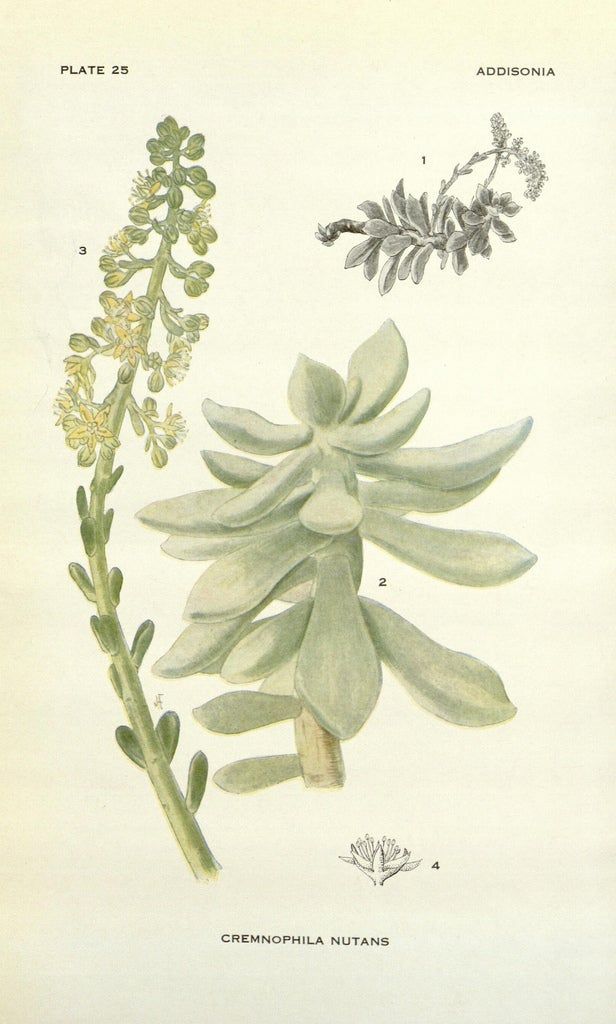What Are Cremnophila Plants – Learn About Cremnophila Plant Care


The world of succulents is a strange and varied one. One of the genera, Cremnophila, has often been confused with Echeveria and Sedum. What are cremnophila plants? A few basic cremnophila plant facts will help sort out what these wonderful succulents are and how best to identify them.
What are Cremnophila Plants?
Cremnophila is a genus of succulent plants that was proposed in 1905 by Joseph N. Rose, an American botanist. The genus is native to Mexico and has characteristics that once put it in the Sedoideae family. It has been moved to its own sub-genus because it has features that also place it with Echeveria varieties. There is one species that is available for cactus lovers. Cremnophila succulents are primarily small, desert plants that produce stems and flowers that resemble sedum. The leaves are closely aligned with those of echeveria in rosette form and texture. These attributes made classifying the plants difficult and it was felt that cremnophila's nodding, narrow inflorescence set it apart from the other two. It is still referred to as Sedum cremnophila in some publications, however. Current DNA comparisons will likely determine if it remains in its separate genus or will rejoin one of the others.
Cremnophila Plant Facts
Cremnophila nutans is the known plant in this genus. The name comes from the Greek "kremnos," meaning cliff, and "philos," which means friend. Supposedly, this refers to the plant's habit of clinging by fibrous roots and stems to cracks in canyon walls in E. Central Mexico. The plants are chubby rosettes with thickened leaves, bronze green in color. The leaves are rounded at the edges, alternate in arrangement, and 4 inches (10 cm.) long. The flowers are similar to sedum but have longer stems with the whole inflorescence bent and nodding at the tip.
Cremnophila Plant Care
This makes an excellent houseplant but gardeners in USDA zones 10 to 11 can try growing cremnophila outdoors. The plant hails from arid, rocky regions and needs well-draining soil, preferably on the gritty side. It requires infrequent but deep watering, and should receive half the water in winter when it is dormant. This little succulent should be fertilized in spring with a diluted houseplant food or cactus formula. Snip off the inflorescence when flowers are done blooming. Cremnophila plant care is easy and the succulent's needs are few, making it perfect for new gardeners.
Gardening tips, videos, info and more delivered right to your inbox!
Sign up for the Gardening Know How newsletter today and receive a free copy of our e-book "How to Grow Delicious Tomatoes".

Bonnie Grant is a professional landscaper with a Certification in Urban Gardening. She has been gardening and writing for 15 years. A former professional chef, she has a passion for edible landscaping.
-
 Why Are My Seedlings Wilting? 6 Common Causes – And How To Save Them
Why Are My Seedlings Wilting? 6 Common Causes – And How To Save ThemWilted seedlings are a definite sign that something is not right. Learn how to diagnose the problem and bring baby plants back from the brink.
By Teo Spengler
-
 Bugged About Strawberry Pests? 6 Common Pests, Plus How To Protect Your Precious Strawbs
Bugged About Strawberry Pests? 6 Common Pests, Plus How To Protect Your Precious StrawbsStrawberry plants looking a little under the weather and not sure why? Check to make sure they haven’t come a-cropper to one of these classic strawberry pests
By Tonya Barnett